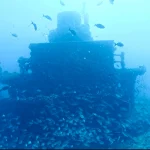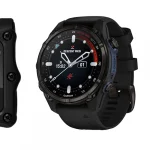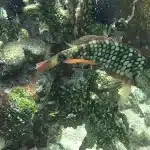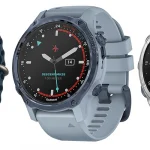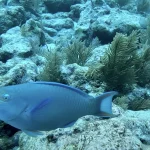Table of Contents
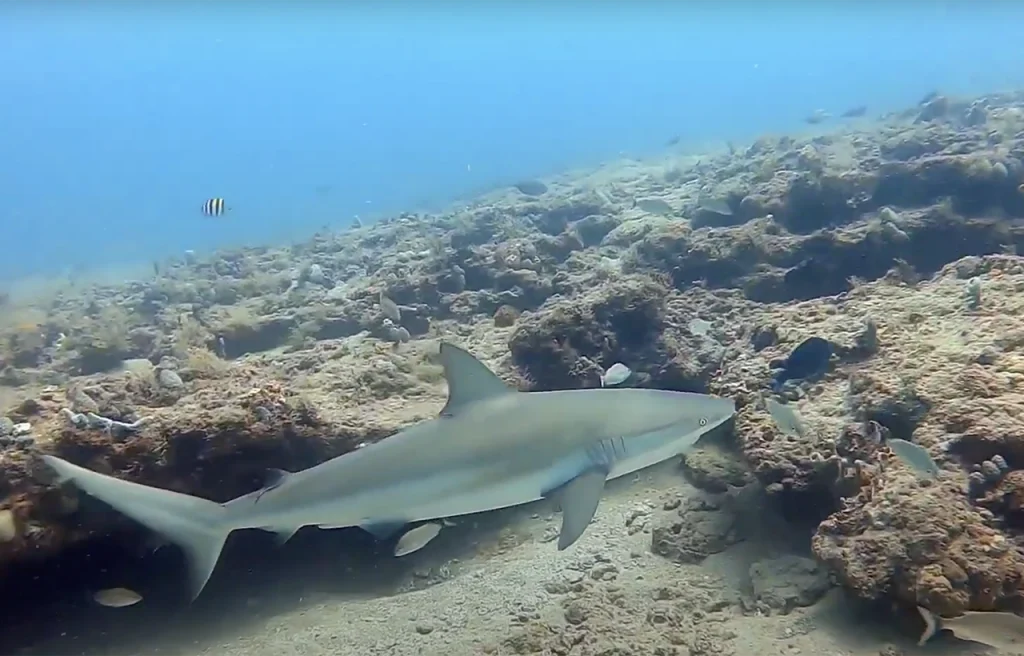
Jupiter, Florida is a popular destination for scuba diving, one notable dive site in the area is Julies, which is part of the Loggerhead dive site.
Article at a Glance
- Location: Julies dive site is situated in Jupiter, Florida, known for its vibrant marine ecosystems and diverse underwater landscapes.
- Depth: The dive site features depths ranging from 60 to 70 feet, making it accessible for both beginner and advanced divers.
- Visibility: Typically offers excellent visibility of 30 to 60 feet, particularly during the winter months from January to April.
- Marine Life: Divers can expect to encounter a variety of species, including loggerhead turtles, Goliath groupers, and various reef sharks, enhancing the diving experience.
- Diving Conditions: The site is characterized by drift diving conditions with moderate currents, suitable for divers with varying levels of experience.
- Best Time to Dive: The optimal time for diving is from January to April, when visibility is at its best and marine life activity is high.
- Conservation Efforts: Local initiatives focus on protecting marine habitats and promoting sustainable diving practices, ensuring the ongoing health of the underwater ecosystem.
Julies Jupiter
- Location: Julies is an extension of the Loggerhead dive site, situated in approximately 61 feet of water, with depths reaching about 75 feet in sandy areas. The dive features smaller ledges that are ideal for lobstering and hunting, making it a favorite among divers looking for these activities.
- Marine Life: Divers can expect to encounter a variety of marine species, including:
- Loggerhead turtles, which often rest here during nesting season.
- Various fish species like Goliath grouper, reef sharks, and colorful tropical fish.
- The site is also known for sightings of larger creatures such as green moray eelsand possibly even nurse sharks.
- Diving Conditions: The dive site typically features moderate currents, with visibility often around 50 feet. It is recommended for divers to maintain a slow and steady pace to fully appreciate the underwater scenery and wildlife interactions.
What Marine Life Can I Expect To See?
- Loggerhead Turtles: These turtles are commonly spotted, especially during nesting season when they rest in the area before heading to the beach to lay eggs.
- Goliath Groupers: Known for their impressive size, Goliath groupers can grow up to 8 feet long and weigh as much as 800 pounds. They are often seen around wrecks and ledges, particularly during their spawning season from August to October.
- Reef Sharks: Various species of reef sharks frequent the area, providing thrilling encounters for divers. Lemon sharks are particularly notable and can be seen aggregating in the winter months.
- Moray Eels: Both green and spotted moray eels inhabit the crevices of the ledges, adding to the diversity of marine life in the area.
- Tropical Fish: The site is home to numerous species of colorful tropical fish, including:
- Angelfish (Blue, Queen, French, and Gray)
- Butterfly Fish (Four-eye, Spotfin, Reef, and Banded)
- Grunts (French, Blue, Stripe, and Spanish)
- Barracuda, Cobia, and various snapper species.
- Other Marine Creatures: Divers may also encounter Southern rays, nurse sharks, and occasionally larger species like hawksbill turtles and various types of grouper
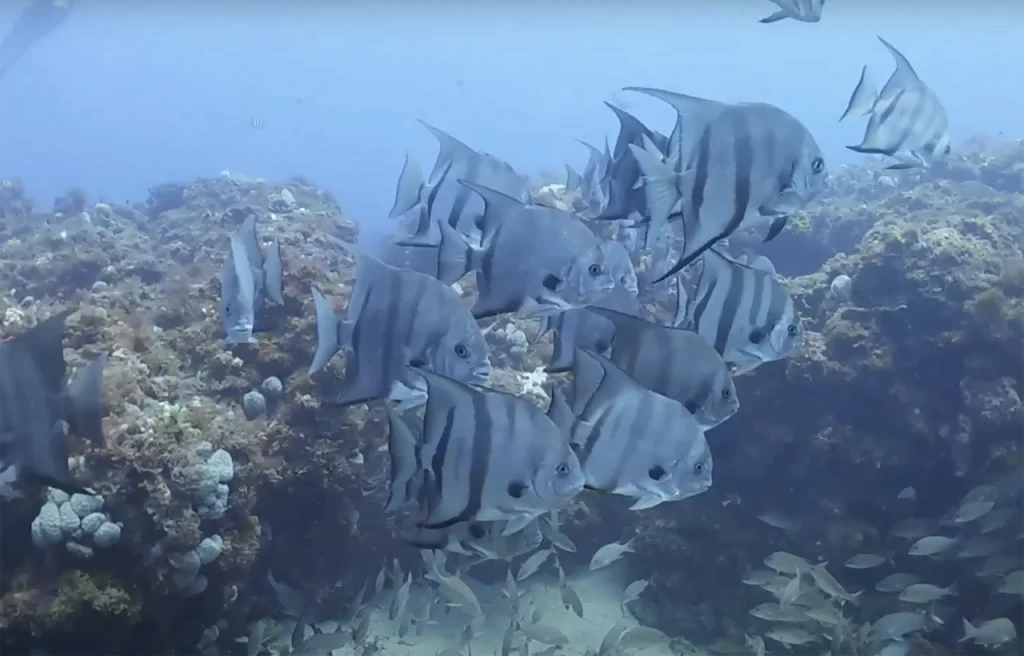
What Do Divers Say About This Site?
General Impressions
- Exceptional Marine Life: Many divers highlight the abundance of marine species, particularly loggerhead turtles, Goliath groupers, and various reef fish. The vibrant underwater ecosystem is frequently mentioned as a major attraction, making each dive visually stunning and exciting.
- Diving Conditions: Reviewers note favorable diving conditions with good visibility, often reported between 30 to 60 feet, and moderate currents. This enhances the overall diving experience, allowing divers to fully appreciate the underwater landscape.
Dive Shop Experiences
- Professional Crew: Divers frequently commend the professionalism and friendliness of the dive crew at local dive shops such as Jupiter Scuba Diving. Many reviews mention how accommodating and knowledgeable the staff are, contributing to a comfortable and enjoyable experience.
- Guided Tours: Several divers recommend participating in guided tours, as guides are adept at pointing out hidden marine life and navigating the dive sites effectively. This is especially beneficial for those who may be less experienced or unfamiliar with the area.
Specific Highlights
- Memorable Encounters: Divers have shared memorable encounters with marine life, including sightings of sharks and rays. These experiences often leave a lasting impression, prompting many to return for additional dives.
- Comfortable Experience: Many reviews emphasize that the dives are well-organized and stress-free, with crews handling equipment and logistics efficiently. This allows divers to focus on enjoying their time underwater rather than worrying about preparations.
Key Information
| Category | Details |
|---|---|
| Location | Jupiter, Florida |
| Depth Range | 60 to 70 feet (approximately 18 to 21 meters) |
| Visibility | Typically 30 to 60 feet; best from January to April |
| Diving Conditions | Drift diving; moderate currents |
| Marine Life | Loggerhead turtles, Goliath groupers, reef sharks, various tropical fish |
| Suitable for Beginners | Yes, with proper training and guidance |
| Suitable for Advanced Divers | Yes, offers opportunities for skill enhancement and exploration |
| Best Time to Dive | January to April (for visibility and marine life activity) |
| Unique Features | Swim-through tunnels, ledges, vibrant marine ecosystems |
| Recommended Dive Shops | Jupiter Scuba Diving, Jupiter Dive Center, Salty Divers |
Highlights of Diving This Site?
Unique Dive Site Characteristics
- Depth and Topography: Julies features a depth range from approximately 61 to 75 feet, with a main ledge that is not linear, allowing divers to swim east and west along its contours. This unique structure creates various underwater environments, enhancing the diving experience.
- Marine Life Diversity: The site is renowned for its rich marine biodiversity. Divers can expect to see:
- Loggerhead turtles, especially during nesting season when they rest in the area.
- Goliath groupers and various species of reef fish.
- Reef sharks, including seasonal sightings of lemon sharks during winter months.
Diving Conditions
- Visibility: Divers often report excellent visibility, commonly referred to as “Jupiter Blue,” which enhances the overall experience and makes it easier to spot marine life.
- Drift Diving: The site typically involves drift diving techniques, requiring divers to be proficient in managing currents. This method allows for a more relaxed exploration of the underwater landscape as divers drift along the ledges.
Seasonal Highlights
- Nesting Season: During turtle nesting season, divers have the opportunity to observe female loggerhead turtles resting before heading to shore to lay their eggs, adding a unique aspect to dives during this time.
- Winter Shark Sightings: From January to April, divers may encounter aggregations of lemon sharks, making winter dives particularly exciting and memorable.
Photographic Opportunities
- Vibrant Underwater Scenes: The combination of clear waters and diverse marine life provides excellent opportunities for underwater photography. The unique topography and colorful fish create stunning backdrops for capturing memorable moments.
My Favorite Dive Computers
I have compared the 3 top diving computers for each category to help making the right choice easier:
Iconic Spots At This Site
The Swim-Through Tunnel
- Description: This defining feature allows divers to navigate through a tunnel filled with vibrant marine life. As divers enter, they are often greeted by Goliath groupers, reef sharks, and schools of colorful fish.
- Experience: The thrill of swimming through the tunnel while observing diverse aquatic species makes this spot a memorable highlight.
The Donut Hole
- Description: Located towards the end of the dive, this area is famous for its congregation of Caribbean reef sharks. The circular formation creates a unique environment where divers can witness these majestic creatures swimming in and out.
- Experience: Divers describe the sight of multiple sharks emerging from the “Donut” as exhilarating, resembling a clown car filled with sharks.
The Amphitheatre
- Description: This section of the dive site features unique topography, providing an excellent vantage point for observing marine life.
- Experience: Divers often linger here to take in the surroundings and enjoy sightings of various species, making it a prime location for relaxation and exploration.
Area 51
- Known for its rich marine life, including loggerhead turtles and Goliath groupers, this site offers deep coral reefs and strong currents ideal for drift diving.
Captain Kirle’s
- This site features high relief ledges perfect for lobster and lionfish hunting, adding an exciting element for those interested in underwater hunting.
Jupiter Wreck Trek
- Comprising multiple shipwrecks, this dive site attracts various marine species, including spotted eagle rays and lemon sharks, making it a thrilling destination for wreck diving enthusiasts.
Environmental Conservation Efforts
Sawfish Bay Marine Restoration Project
- This multi-phase initiative aims to restore marine habitats adjacent to the Tunnels dive site. Efforts include installing a living shoreline, promoting seagrass and oyster growth, and enhancing water quality. These actions are designed to recover threatened species and improve the resilience of local ecosystems, which directly benefits the surrounding waters where diving occurs (3).
Jupiter Inlet District Initiatives
- The Jupiter Inlet District is dedicated to maintaining navigable channels and protecting natural resources in the area. Their mission includes safeguarding wildlife habitats and promoting sustainable recreational activities, which indirectly supports the health of dive sites like Julies.
Marine Life Protection
- Conservation efforts are focused on protecting various marine species that frequent the Julies site, including Goliath groupers, sea turtles, and various shark species. These initiatives are crucial for maintaining biodiversity and ensuring these species thrive in their natural habitats.
Community Engagement and Education
- Local dive operators actively engage divers in conservation education, emphasizing responsible diving practices. This includes encouraging divers to avoid touching marine life and disturbing habitats during dives, fostering a culture of respect for the underwater environment.
Habitat Restoration Initiatives
- Various organizations collaborate on habitat restoration projects aimed at enhancing coral reefs and other critical marine environments. These initiatives help sustain the health of ecosystems that divers enjoy at sites like Julies.
Cleanup Events
- Dive centers such as Jupiter Dive Center participate in community cleanup events, including efforts to remove debris from dive sites and surrounding waters. They support programs like the Coral Reef Conservation Program through the Florida Department of Environmental Protection, contributing to cleaner and healthier reefs (1)(2).
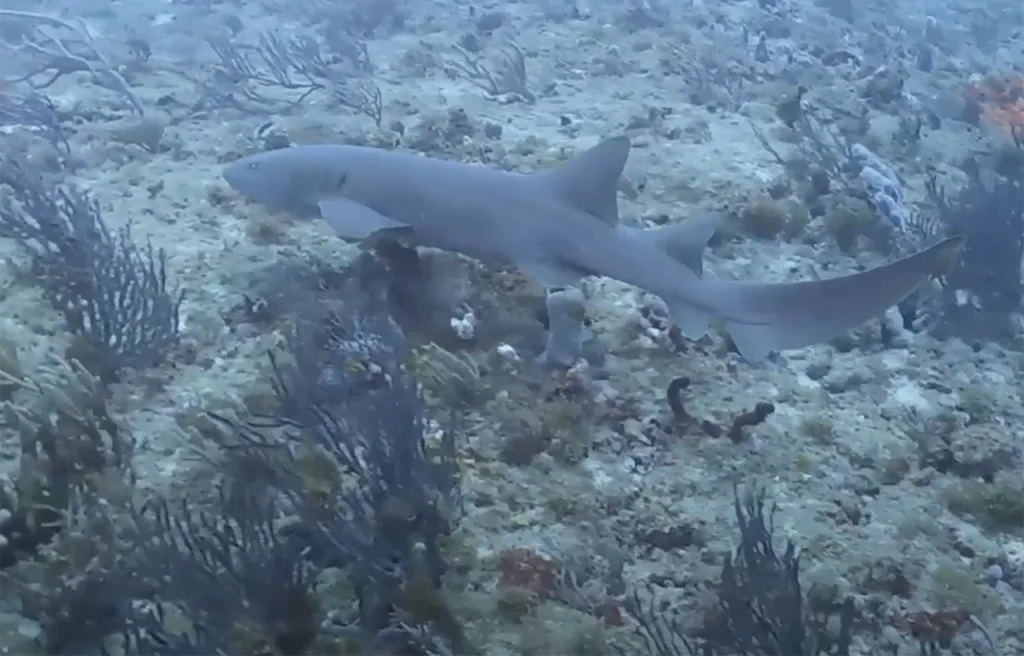
Maximizing Your Diving Experience at Julies
Diverse Marine Life
- Expect to see a variety of species, including loggerhead turtles, Goliath groupers, and a multitude of tropical fish such as angelfish and butterfly fish. The presence of nurse sharks and seasonal lemon sharks adds excitement, especially during winter months.
Unique Underwater Topography
- The dive site features low-profile ledges and small caves, creating mini-environments that are ideal for exploration. The non-linear layout encourages divers to swim east and west along the ledges, making each dive a unique experience.
Optimal Diving Conditions
- Generally, visibility is excellent, often referred to as “Jupiter Blue,” which can enhance the overall diving experience. The depth ranges from 61 to 75 feet, making it accessible for intermediate divers while still offering enough depth for more advanced exploration.
Choose the Right Time to Dive
- The best time to dive at Julies is during the winter months (January to April) when visibility is high and lemon sharks are commonly seen. Additionally, consider diving during turtle nesting season for a chance to observe loggerhead turtles resting before heading ashore.
Prepare for Drift Diving
- Familiarize yourself with drift diving techniques as currents can be swift. Practice good buoyancy control and consider using surface marker buoys (SMBs) for safety.
Engage with Local Dive Shops
- Utilize local dive shops such as Jupiter Dive Center or other reputable operators that offer guided dives. Their knowledge of the site can enhance your experience by pointing out unique marine life and ensuring safety.
Respect Marine Life
- Practice responsible diving by avoiding contact with marine animals and habitats. This not only protects the ecosystem but also enhances your experience by allowing you to observe wildlife in their natural behavior.
Photography Opportunities
- Bring an underwater camera to capture the vibrant marine life and stunning underwater landscapes. The clear waters and diverse species provide excellent opportunities for photography.
Participate in Conservation Efforts
- Engage in local conservation initiatives or cleanup events organized by dive shops or environmental groups. This not only contributes positively to the marine environment but also connects you with fellow divers who share a passion for protecting these ecosystems.
Capturing Memories at Julies site in Jupiter: Photography Tips
Gear Preparation
- Streamline Your Equipment: Ensure your dive gear is streamlined to minimize drag. This will help maintain buoyancy and stability while photographing marine life.
- Use Proper Housing: Make sure your camera is in a suitable waterproof housing to prevent leaks. Familiarize yourself with its features before your dive.
Timing and Lighting
- Shoot with the Sun Overhead: For optimal lighting conditions, plan your dives when the sun is directly overhead. This maximizes light penetration and enhances color vibrancy in your images (4).
- Adjust Settings for Depth: Use a higher ISO (around 800) and a medium shutter speed to capture sharp images without losing quality due to low light conditions.
Composition Techniques
- Get Close to Your Subject: Water density can wash out colors and details; therefore, getting as close as possible to your subjects will yield clearer, more vibrant images.
- Framing: Pay attention to how you frame your shots, especially with larger subjects like sharks or turtles. Use the surrounding environment creatively to add context and depth.
Capturing Action
- Stay Calm Around Marine Life: Sharks and other marine creatures are often curious and may approach you if you remain calm. Avoid sudden movements that could scare them away; let them come to you for the best close-up shots.
- Positioning: If you’re at the front of the dive group, take advantage of this position to compose shots before drifting away from potential subjects.
Using Strobes Effectively
- Position Strobes High and Wide: If using strobes, position them high and wide to minimize backscatter from sandy bottoms, which is common in Jupiter dives (5).
- Experiment with Lighting: Use strobes to enhance colors, especially when diving deeper than 30 feet where natural light diminishes.
Utilize Natural Light
- When possible, take advantage of natural light during shallower dives. This can enhance color saturation in your images and provide a beautiful backdrop for your subjects.
Practice Good Diving Techniques
- Be comfortable with your dive gear and proficient in buoyancy control. This will help you react quickly during fast-action moments and ensure you don’t miss great photo opportunities.
Frequently Asked Questions
When is the best time to dive Julies
The best time to dive at the Julies dive site in Jupiter, Florida, is generally from January through April. This period offers several advantages for divers:
Marine Life Activity: During these months, divers have the opportunity to see lemon sharks, which aggregate in the area. Additionally, loggerhead turtles are frequently spotted as they rest before nesting.
Visibility: The visibility is typically excellent during this season, often referred to as “Jupiter Blue,” enhancing the overall diving experience and making it ideal for underwater photography.
Consistent Conditions: The winter months provide reliable diving conditions, with calmer seas and better visibility compared to other times of the year. This makes it a prime time for both sightseers and underwater hunters.
What is the visibility like while diving Julies?
Visibility while diving at the Julies dive site in Jupiter, Florida, is generally considered excellent. Divers can expect what is often referred to as “Jupiter Blue,” characterized by clear and vibrant waters that enhance the underwater experience.
Visibility Details:
Typical Range: Visibility typically ranges from 30 to 60 feet, depending on seasonal conditions and weather factors.
Best Conditions: The winter months, particularly from January to April, are known for the best visibility. During this time, divers often report clearer waters, making it ideal for both sightseeing and underwater photography.
How deep are the dives at Julies
The dives at the Julies dive site in Jupiter, Florida, typically range from 60 to 70 feet(approximately 18 to 21 meters) in depth. This depth makes it accessible for divers with varying levels of experience, although it is generally recommended for those with at least some level of training due to the underwater conditions and potential currents present in the area.
Is Julies suitable for beginners?
Yes, the Julies dive site in Jupiter, Florida, is considered suitable for beginner divers, provided they have completed proper training and certification.
Depth and Conditions
Depth Range: The dives at Julies typically range from 60 to 70 feet, which is manageable for novice divers who are trained to handle these depths. This allows beginners to explore without feeling overwhelmed by excessive depth.
Visibility: The site generally offers good visibility, often between 30 to 60 feet, enhancing the overall diving experience and making it easier for beginners to navigate and observe marine life.
Marine Life and Experience
Rich Marine Life: The site is known for its vibrant marine ecosystem, including species like loggerhead turtles, Goliath groupers, and various tropical fish. This abundance of wildlife can make dives engaging and enjoyable for new divers.
Drift Diving: Julies also features drift diving conditions, which can be easier for beginners as it allows them to float with the current rather than swim against it. This reduces physical exertion and lets divers focus on enjoying the underwater scenery.
Recommendations
Divers are encouraged to dive with experienced guides from local dive shops, which provide support and ensure safety during the dive. These guides can help beginners navigate the site effectively while providing insights into the marine environment.
Is Julies suitable for advanced divers?
Yes, the Julies dive site in Jupiter, Florida, is suitable for advanced divers.
Depth and Conditions
Depth Range: The dives at Julies typically range from 60 to 70 feet, which is manageable for advanced divers who are trained to handle deeper dives. This depth allows for exploration of diverse marine environments and interactions with larger species.
Drift Diving: The site often involves drift diving, requiring proficiency in managing currents and buoyancy. Advanced divers are better equipped to navigate these conditions effectively, making the experience more enjoyable.
Marine Life
Diverse Ecosystem: Advanced divers will appreciate the opportunity to encounter a variety of marine species, including Goliath groupers, loggerhead turtles, and various types of reef sharks. These encounters provide exciting and rewarding experiences.
Unique Features
Underwater Topography: The unique underwater landscape at Julies, characterized by ledges and mini-environments, offers advanced divers opportunities to enhance their skills in navigation and buoyancy control.
Recommendations
While Julies is suitable for advanced divers, it is advisable for those diving here to have appropriate certifications (such as Advanced Open Water) and experience in drift diving techniques to fully enjoy the site’s offerings.
Jupiter Dive Sites
- Area 51
- Area 29
- Tunnels
- Loggerhead Reef
- Bluffs Reef
- Bonnies
- Captain Kurls
- Spadefish Point
- Coral Cove Park
- Captain Mike’s
- Julies
- Emerald Charters Shark Dive
- Jupiter Wreck Trek
- Donut
- Scarface Reef Andrew “Red” Harris No Shoes Reef
- Jupiter Inlet
- Step Reef
- Sawfish Bay
- Marine Restoration Reef
- North County Reef
- Lighthouse
- Finz Den
- High Ledge
- Leigh’s Ledge
- Monkey’s Ledge
- Gary’s

